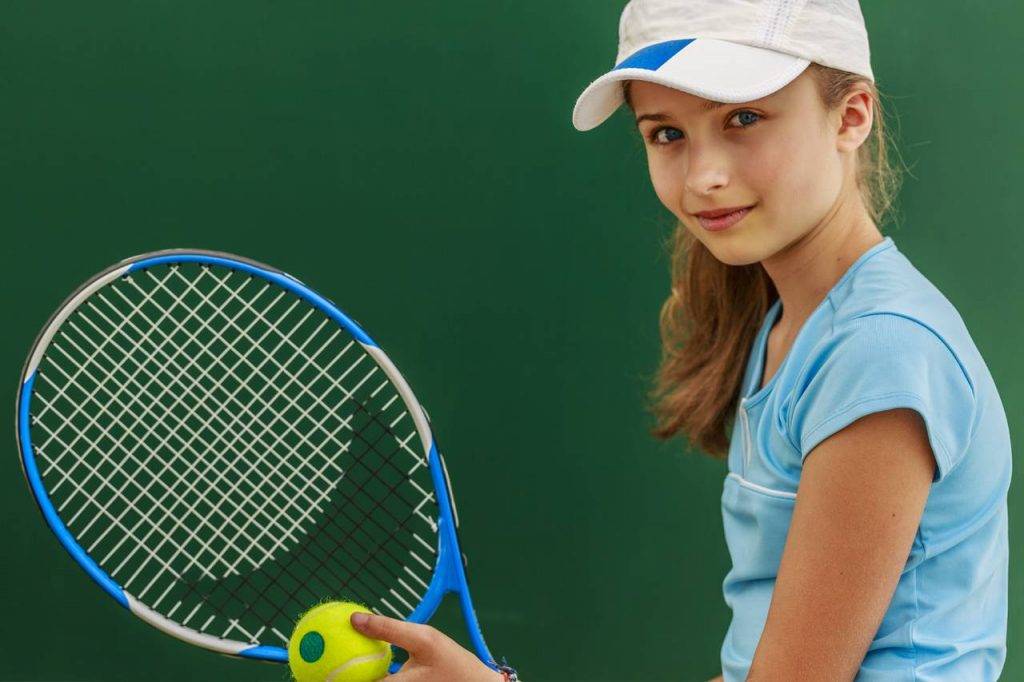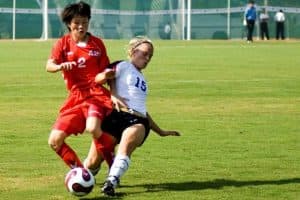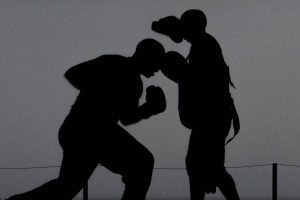Tennis players need speed, endurance, flexibility, and agility to be successful in the game. Did you know that tennis players also need excellent visual skills?
It cannot be argued that vision clarity is essential for tennis— for the ability to clearly see the ball, net, boundary lines, and players on the court. But your clarity of near and distant vision is not all you need to be successful on the court. Your vision consists of many different visual skills that help you to see clearly while in motion, as you change focus between distances, and even help you to stay focused on the game.
This article will explain why your tennis skills are actually dependent on your visual skills, and help you to understand the specific visual skills necessary for success in the game.
Which visual skills are necessary for optimal tennis performance?
- Dynamic visual acuity
- Accommodation
- Eye tracking
- Anticipation timing
- Concentration
- Depth perception
- Eye-hand coordination
- Peripheral vision
- Speed and span of recognition
Contact a vision therapy eye doctor near you, to improve your visual skills that are necessary for optimal tennis playing.
Dynamic visual acuity
Dynamic visual acuity allows you to see objects and images clearly, when they are in motion, or you yourself are in motion. Tennis is a fast-pace sport— the ball and players are in constant motion. For this reason, dynamic visual acuity is essential for avoiding errors and faults, and improving your chances of winning the match.
Dynamic visual acuity allows you to quickly see the spin on the ball, to recognize the difference between a full court blast and a top spin drop shot.
Accommodation
Accommodation allows your eyes to remain focused on an object, as it moves between two distances, near and far. To be able to follow the ball that is in constant back and forth motion, your accommodative skills need to be well developed. The rapid, continual shift in focus between distances is essential for keeping your eyes on the ball.
This visual skill is also necessary for identifying your opponent’s position before serving that ace.
Eye tracking
Eye tracking is also essential for following the ball and your opponent as they move around on the court. This visual skill will help you to track all movements on the court in relation to the net and boundary lines, without moving your head. This ability to just move your eyes, without moving your head is not only a more effective way to see, but also helps you to maintain your balance.
Eye tracking is a vital skill for following the path of the ball until it makes contact with your racket, enabling a smooth, confident stroke.
Anticipation timing
In tennis, timing is everything. When you anticipate the appropriate time for that backhand, or ace, the action will be applauded, However, poor anticipation timing can result in a fault or wood shot. Additionally, when receiving a serve, you only have a split second to process the type of serve your opponent has sent your way, and respond appropriately— not too early, and not too late.
This visual skill is absolutely essential in competitive tennis matches, when your successful performance on the court is dependent on your ability to anticipate the upcoming action.
Concentration
Tennis requires a great amount of focus and concentration. Many factors, such as weather conditions, or even recovering from a fault, may challenge your level of concentration. However, your ability to concentrate and focus all your attention on the game will help you to return a serve, or play at the net, and maintain overall peak performance levels.
Strong concentration skills will allow you to perform equally well during the opening serve and in the third set decider.
Schedule an appointment with a vision therapy eye doctor to improve your visual skills.
SEE RELATED: Vision for Rock Climbing
Depth perception
Depth perception is essential for quickly and accurately judging the distance between yourself, your opponent, the ball, the net, and boundary lines. Depth perception is essential for accurately positioning your shots, evaluating your opponent’s position in relation to your position and the net, assessing the speed of the oncoming ball, and judging if the ball served to you will land in or out of bounds— helping you to decide if you should play the ball or not.
Clear depth perception is crucial to get to that unexpected drop shot in time.
Eye-hand coordination
Eye-hand coordination allows you to react to incoming visual information with accurate body movements. This skill is essential for tennis because it enables you to hit a moving object with your racket with accurate timing of your shots, and control over your body movements as you position yourself appropriately. Eye-hand coordination is directly related to the visual information received by the brain, and must be well developed for success in a fast-past sport, such as tennis.
Well developed eye-hand coordination will allow you to hit that sweet spot every time.
Peripheral vision
Your peripheral vision allows you to see everything in your environment, without turning your head, and allows you to be aware of the speed and position of the ball, in order to make perfect contact, while also being aware of your opponent’s position, the net, and the court’s boundary lines.
When playing doubles, your peripheral vision is essential for helping you to be aware of your partner’s body and racket at all times.
Speed and span of recognition
Speed and span of recognition is an essential visual skill that allows you to respond and react to a play as quickly as possible. This skill allows you to quickly detect the speed and spin of the ball as it comes off your opponent’s racket, in order to prepare an effective return shot.
The faster your speed and the wider your recognition, the more likely you will successfully win the match-point game.
What can I do to enhance my tennis skills?
If you are an avid tennis player, but are struggling to perform to your athletic potential, you may have a problem with your visual skills.
The good news is, with vision therapy, you can retrain the connections between your eyes and brain to strengthen your visual skills, and enhance your tennis performance.
LEARN MORE: Guide to Sports Vision
Schedule an appointment with a vision therapy eye doctor for a thorough evaluation of your vision and visual skills. Your doctor will determine which skills require strengthening, and can prescribe a program of vision therapy to help you gain confidence in your tennis skills.









